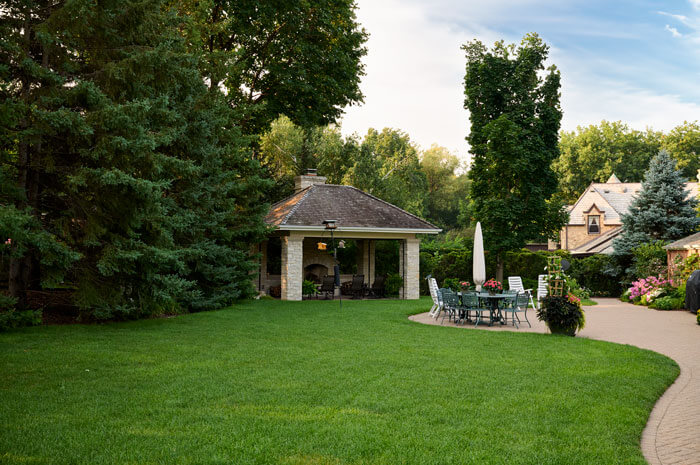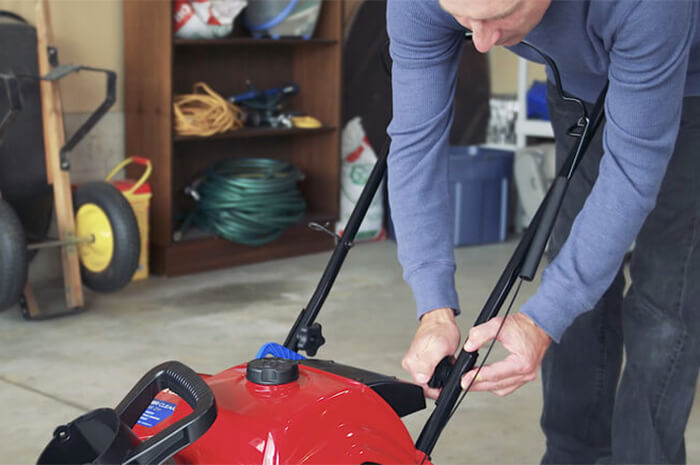
No species of grass can thrive everywhere, so it is important for the health and vibrancy of your lawn to pick a warm- or cool-season grass with your local climate in mind. And if you live in the area where north and south meet, don’t worry — there are a number of transition zone grasses that will be right at home in your yard.
What is the difference between warm- and cool-season grasses?
Cool-season grasses do most of their growing in spring and fall when the soil is 50-65 degrees Fahrenheit and the air temperature is 60-75 degrees. Cool-season grasses also need regular irrigation during the heat of summer or they will go dormant.
Warm-season grasses, on the other hand, wait until the heat of summer to do the majority of their growing. Once the soil reaches 70-90 degrees and the air is 80-95 degrees, warm-season grasses will grow strongly and won’t go dormant again until cooler temperatures arrive.
Cool-season grasses
In the northern U.S., Canada, and higher elevations throughout the country, cool-season grasses are the best choice for your lawn. Most of these varieties are able to withstand the harsher winter months without much damage and will keep their color later in the year in comparison to warm-season species. Some of the most common types of cool-season grasses include:
Kentucky bluegrass (Poa pratensis)
Fine-textured, attractive grass that withstands moisture and temperature extremes, is winter hardy, and holds up well to foot traffic. Grows in full sun to light shade and has more than 100 cultivars. Consult your local Cooperative Extension System (CES) for recommendations for the best choices for your yard.
Drawbacks: Slow germination, doesn’t tolerate wet soil or shade.
Rough-stalked bluegrass (Poa trivialis)
Fine texture with light-to-medium green color. Seedlings grow vigorously and will tolerate acidic soil, poor drainage, moisture, and shade. Keeps color well into the fall.
Drawbacks: Cannot tolerate hot, dry conditions or heavy foot traffic.
Tall fescue (Festuca arundinacea)
Durable utility grass with a deep root system that allows it to tolerate heat and drought. New and improved “turf-type” varieties are darker in color and more resistant to diseases and pests.
Drawbacks: Prone to thinning out in shade or cooler areas and is slow to recover from injury.
Fine fescue (Festuca species)
A dense, fine-textured dark green grass that is the most drought- and shade-tolerant of cool-season grasses. Ideal choice for low-maintenance lawns, acidic soils, and shady areas. Does not require much fertilization.
Drawbacks: Needs well-drained soil, and doesn’t tolerate heavy wear and tear.
Perennial ryegrass (Lolium perenne)
Bright green, medium textured bunchgrass that grows in many soils, including wet soil. New cultivars produce finer, denser, and darker green turf that are more pest- and disease-resistant. Can withstand foot traffic and compact soils.
Drawbacks: Best suited for smaller coastal regions that have mild winters and cooler, moist summers. Low drought tolerance and are prone to Pythium blight.
Warm-season grasses
Across the southern United States, heat and mild winters create the ideal environment for warm-season grasses. Many of these varieties are also tolerant of salt and are great choices for lawns near the coast. Popular types of warm-season grass include:
St. Augustine grass (Stenotaphrum secundatum)
An easy-to-grow dense grass with blue-green coloring and is one of the most popular varieties in coastal areas.
Drawbacks: Will create a thick thatch if heavily watered and fertilized. Vulnerable to chinch bugs and grubs.
Zoysia grass (Zoysia species)
Thick growing and deep-rooted grass that copes well with all soil types, salt, pests, diseases, and partial shade. Once established, weeds have difficulty out-competing the grass.
Drawbacks: One of the higher-maintenance grasses that is difficult to mow, doesn’t recover from damage well, and sometimes takes up to two years to establish.
Bermudagrass (Cynodon species)
Establishes and spreads quickly with the ability to thrive in many soil types, even those containing extra salt. Bermudagrass holds up well against heat, drought, hours of direct sunlight, and heavy traffic.
Drawbacks: Can become invasive if not edged correctly and is the least shade-tolerant warm-weather grass.
Centipedegrass (Eremochloa ophiuroides)
An apple green grass that can grow from full sun to partial shade. Centipedegrass’s slower growth rate doesn’t require much mowing.
Drawbacks: Won’t hold up to heavy foot traffic, salt spray or lack of iron.
Bahiagrass (Paspalum notatum)
Another apple green variety that is a great candidate for low-maintenance lawns. Forms a wear-resistant sod that is generally resistant to pests.
Drawbacks: Difficult to mow and will yellow without enough iron. Grows poorly in alkaline soils and near salt spray.
Carpetgrass (Axonopus affinis)
Will grow in shady or boggy conditions, unlike many other warm-weather grasses. Can be grown fairly easily from seed in low-traffic areas.
Drawbacks: Requires watering during periods of drought and will not stand up to much wear. Browns quickly in the fall and takes longer than other grasses to turn green in the spring.
Transitional zone grasses
While there are some cultivars of many grasses that are being bred to be more usable in transitional zones, the most common two grasses used are tall fescues and zoysia varieties.
In addition to transitional grasses, native grasses like buffalo grass, wheat grass, and blue grama will thrive in the middle Great Plains areas that are often subject to drought and extreme temperature fluctuations.
Choose the best grass for your yard
Narrowing your choices down to warm, cool, or transitional season grasses is a great first step in deciding what grass is ideal for your lawn, but regionality isn’t the only deciding factor. Consider the amount of light, soil composition, drainage issues, frequency of foot and pet traffic, local climate anomalies, and watering requirements before deciding what species of grass you want to use. Accounting for these variables and performing regular maintenance will help ensure a healthy, vigorous yard for many years to come.



